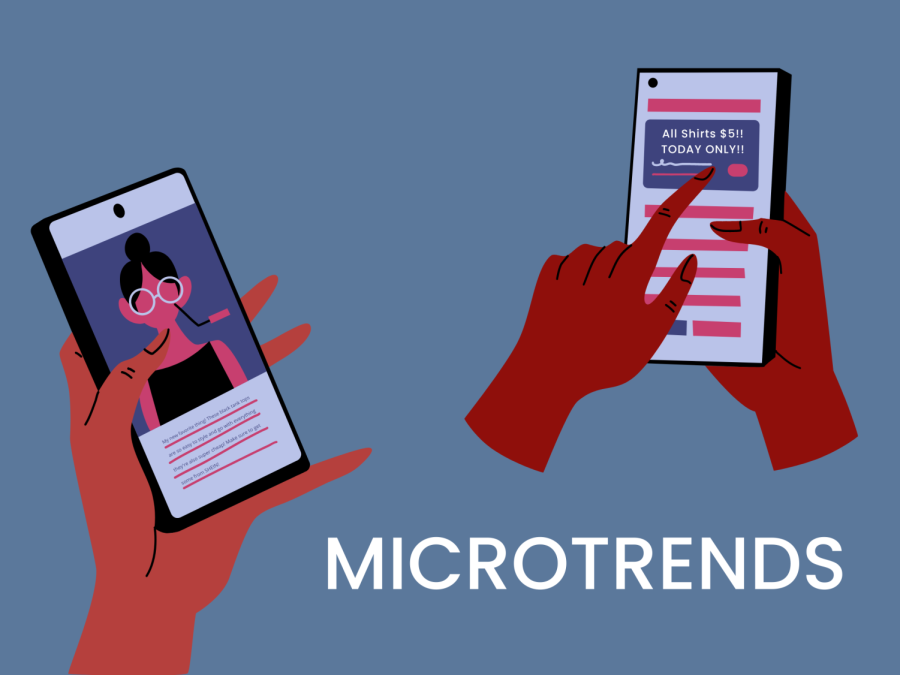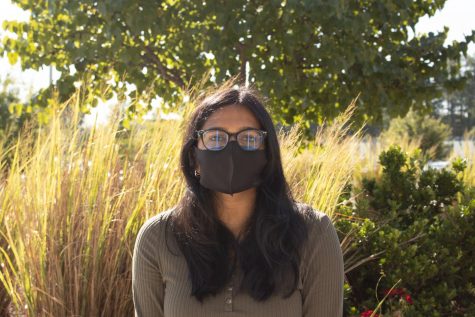Microtrends: the Most Wasteful Trend
March 4, 2022
Fashion is for everyone whether you want to blend in or stand out. And when everyone wants to fit in and wear what’s “in” trends are what comes to mind.
As social media platforms increase their influence, trends and many factors change along with it. But as much as trends seem like they may be worth it, allowing you to match with social media influencers and those who are praised for their style, they have a damaging effect on our environment.
The fashion cycle moves incredibly fast, and the faster the cycle moves, the more clothing waste is produced. This is where micro-trends come in.
Micro-trends are trends in fashion that gain popularity incredibly quickly but fall even faster. Their lifespan can range anywhere from a week to a few months, but they usually never go past 5 years.
If you’re not a fashion model, designer, or in the fashion industry, social media plays a huge role in how trends form and change. Instagram has even added a shopping feature on their app so people can promote their brands and items on the app, and Tiktok allows big brands such as Hollister, Aeropostale, and American Eagle to promote their products along with other smaller brands who advertise products such as clothing, bags/purses, and other accessories.
Along with brands themselves promoting their products, so do influencers. An advertisement may not have as much of an effect on a regular consumer, as it’s biased, but when customers see an influencer or someone with some sort of platform wearing an item of clothing, it can turn into something that everyone wants, in the end, creating a trend. Despite their incredible amount of popularity, these trends are short-lived. The lifespan of a micro-trend has decreased immensely with some lasting only a week. And because these trends are so quick-paced, it allows fast fashion brands to create ample supplies of the popular item, very cheap and very quick.
Fast fashion is one of the biggest consequences that micro-trends bring to us. Brands such as Shein are one of the biggest examples of fast fashion businesses. Not only are the clothes trendy, but they’re also cheap. But what people think is helping them, is hurting others. The reason these clothes are so cheap is because of the way the workers are treated. The cheaper the clothing is, the less the workers get paid. These clothes are typically made in countries such as India, Cambodia, Vietnam, Indonesia, and Turkey where labor is usually much cheaper. Workers are usually paid very little, most of the time not even being enough to survive with the bare minimum.
According to the Garment Worker Center, “approximately 85% of garment workers do not earn the minimum wage and are instead paid a piece rate of between 2-6 cents per piece. Most garment workers work 60-70 hour weeks with take-home pay of about 300 dollars” In North Carolina, the state minimum wage rate is $7.25 per hour. If a regular minimum wage worker was to work a 60-70 hour work week as the fast fashion workers do, they would make over 435 dollars. This is a difference of over 135 dollars which makes a big difference for many people, especially for those who have their whole family working just so that they’re able to eat dinner every day.
Along with the incredibly low amount of pay, the conditions that these workers work in are horrible and inhumane. Workers are not paid overtime and have to work in unsafe, cramped, dirty, and poorly ventilated locations. These conditions can lead to these workers developing serious physical ailments and sometimes even death.
The employees endure these cruel conditions so that they can barely survive, just for these fast fashion brands to profit off of their hard work and live lavishly. And micro-trends only help these businesses thrive and make even more money.
But it’s not just workers who suffer from these micro-trends, but the environment does as well. With factors such as global climate change already leading to the decline of the environment, fast-paced micro-trends and their production bring even more of a negative impact on the planet. Fashion is responsible for 10% of human-caused greenhouse gas emissions and 20% of global wastewater. Greenhouse gas emissions cause climate change and contribute to respiratory disease from smog and air pollution. All of this leads the air quality to decline which leads to harmful health impacts on us. Global fashion also uses around 93 billion metric tons of clean water each year, which is half of what Americans drink every year. Not only do they use lots of clean water, but they also pollute it. The dyeing process for fabrics uses toxic chemicals and is responsible for 17 to 20% of global industrial water pollution. For those in countries where clear water is a luxury, these effects could mean having to drink dirty water or having very little proper water to drink.
For the past few years, micro-trends have been cycling through at a very fast speed and then are deemed uncool and discarded soon after. Some examples of these are patchwork clothes (any type of patchwork, pants, jeans, jackets, etc.), crochet tops, bright and colorful patterned pants, sweater vests, pearl chokers, and UGGs. The rise in popularity with praise from many, but as soon as they’re out, they’re considered weird and many say how “they never liked it in the first place.” When people still have items that were considered a micro-trend, they see these opinions and begin to be ashamed of wearing this item outside or in public, leaving it to go to waste.
This fashion waste puts everything the workers, and the environment wore to waste, There’s nothing wrong with micro trends in general, fashion is a great way to express yourself and your individuality. The problem is the frequency of micro-trends. Public opinion is fickle and fashion companies take advantage of this.
The promise of cheap fashion has created this waste.






